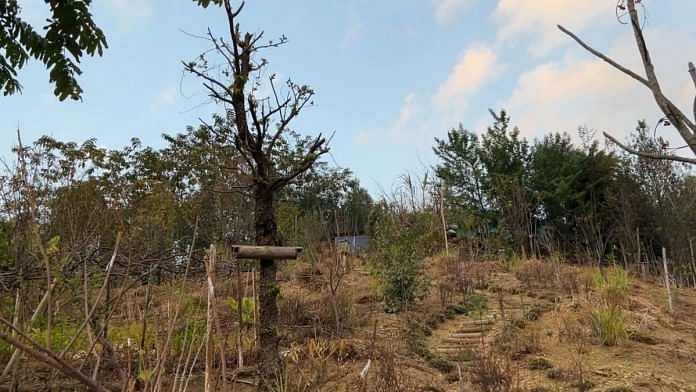Angangba village, Nagaland: Two years ago, a mango plant bore fruit in a Nagaland farmer’s backyard in the Tuensang district. The king of fruits randomly shooting up in most parts of India – which experiences tropical and subtropical climates – isn’t a surprise. But for mangoes to be seen at an altitude of 1,800 meters above above sea level is an anomaly from its ideal condition of growing under 1,400 meters.
This led a group of people to hurriedly plant a mango tree on a high hill in the same district, as part of a unique climate-change experiment.
The piece of land is an agricultural experiment zone and belongs to the Better Life Foundation (BLF), an NGO led by 41-year-old Sethrichem Sangtam.
Since its inception in 2009, BLF has been able to better the lives of farmers in Angangba and neighbouring villages by introducing better agricultural practices. But a word like ‘better’ can only be definitively measured when analysed within Nagaland’s unflattering parameters.
Last year, NITI Aayog’s report on Sustainable Development Goals and Multidimensional Poverty Index indicated that 73 per cent of the state’s 20 lakh people live below the poverty line. The condition is more deplorable in eastern Nagaland – comprising six districts and one of the most underdeveloped areas in the state. It’s here that the influential Eastern Nagaland Peoples’ Organisation (ENPO) has been fiercely demanding a separate state.
Last December, Sangtam was awarded the Rohini Nayyar Prize for Outstanding Contribution to Rural Development.
However, it’s not the quantifiable changes ushered by BLF that the genial Sangtam is proud of. It’s the optimistic outlook that he was able to plant among people.
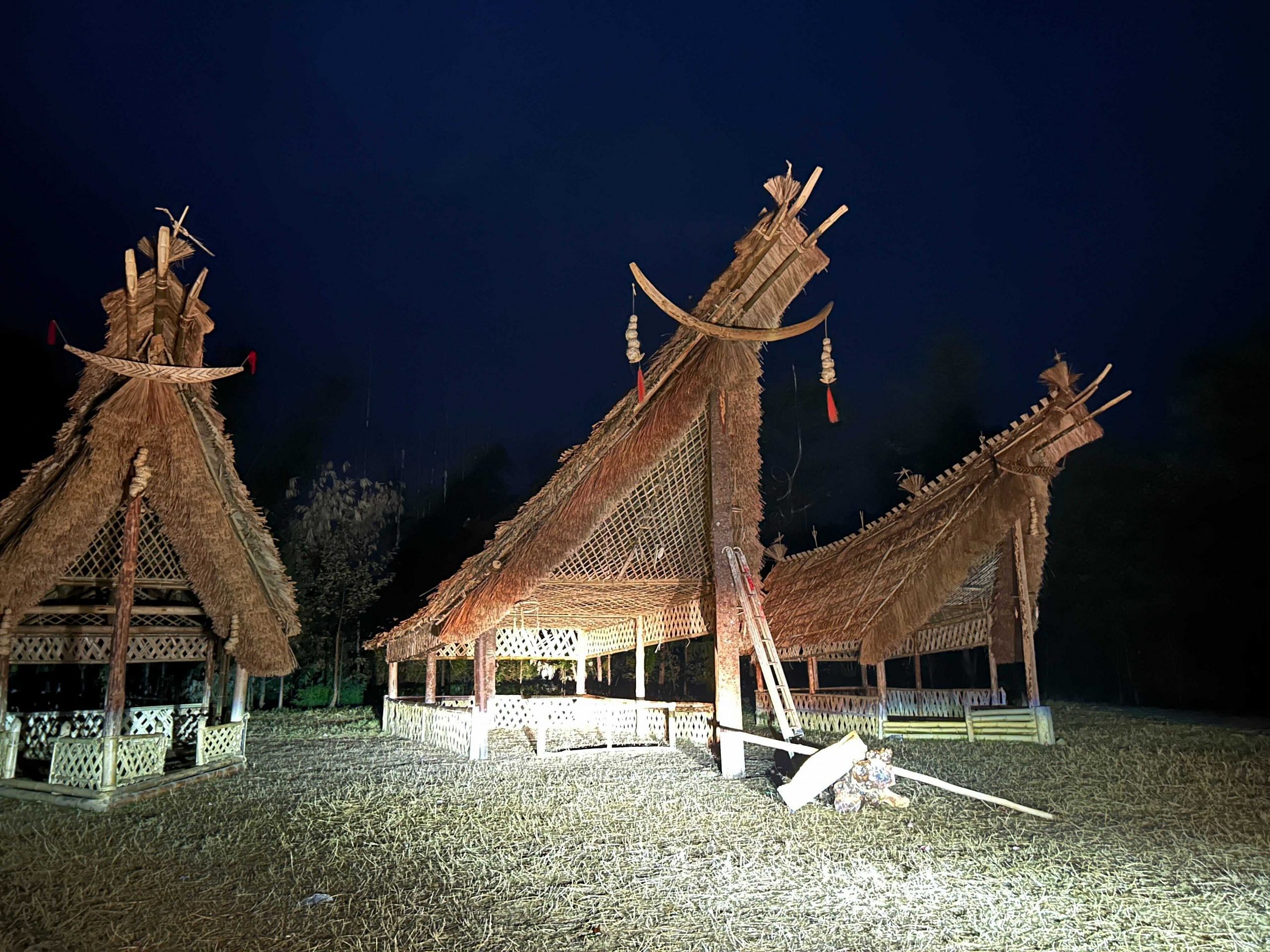
“The most important change is that people started to look beyond what they had before. They are open to changes and innovative ideas. They have started to look at challenges as an opportunity, especially young people. The mindset has changed… I am happy to see that,” Sangtam says.
Also read: Meet Imnainla Jamir—Naga musical powerhouse who belted Indian anthem on electric guitar
New York to Angangba
It takes a 10-hour drive from Nagaland’s commercial hub of Dimapur to reach the pristine village of Angangba in Tuensang district. The drive includes a detour through neighbouring Assam, snaking through ‘highways’ which at times have no traces of a road.
In Nagaland, the distance to a place is not mapped in kilometres but by the time it takes to reach the location. The treacherous road connectivity makes people at BLF joke that Covid lost its energy on the way and couldn’t reach there.
Sangtam returned to his ancestral village in 2009, leaving behind a comfortable life in New York. He had moved to the United States as a member of the Global Youth Advisory Panel to the UN Population Fund. Although he had initially planned to carry out his work in the village for three years, the work never ended.
When he was in the US, he had connected with a few friends in Tuensang who shared a similar interest and drive to work at a community level. “I had sufficient resources so I used to send money,” says Sangtam.
He would chat with them over the phone about ideas they could implement, but it was a frustrating experience. “Just sending money was not working out. They were upset with the outcomes,” he recalled.
But what was it that pushed him to give up a secure life in the US and even an H1B visa?
“It’s more of a passion-driven initiative. Because I grew up in this community, I have seen how people have to undergo myriad challenges,” Sangtam says.
He knew that when people are willing to work, they need guidance and someone who could give them the exposure he got. “So I decided to come home, invest my time, invest my resources, and be with them.”
Sangatam devoted the first six months to gaining the trust of the community. He avoided using a two-wheeler because he didn’t want people to have “wrong expectations”.
For those months, he walked to different villages and crash-landed in farmers’ homes and farms to build a rapport and understand their challenges. He initially wanted to work towards improving the quality of education but the ground realities threw a different picture.
“At the end of six months, I realised it wasn’t the quality education they wanted because it was a far-fetched dream. Basic livelihood security was the major challenge,” says Sangtam, who dropped out of the National Law School of India University in Bengaluru to work in New York as part of the UN programme.
Attachment to community
Sangtam shuttles between Dimapur and Tuensang, and often brings his wife and their three young children to spend more time in the village—a reflection of attachment to the community. It’s a reciprocal relationship as villagers flock to the BLF centre in the evening to interact with him.
Sangtam initially ran his makeshift office from a modest printing and photocopying shop. The owner, Therise Sangtam, was one of the first individuals to adopt the innovative farming practices introduced by BLF.
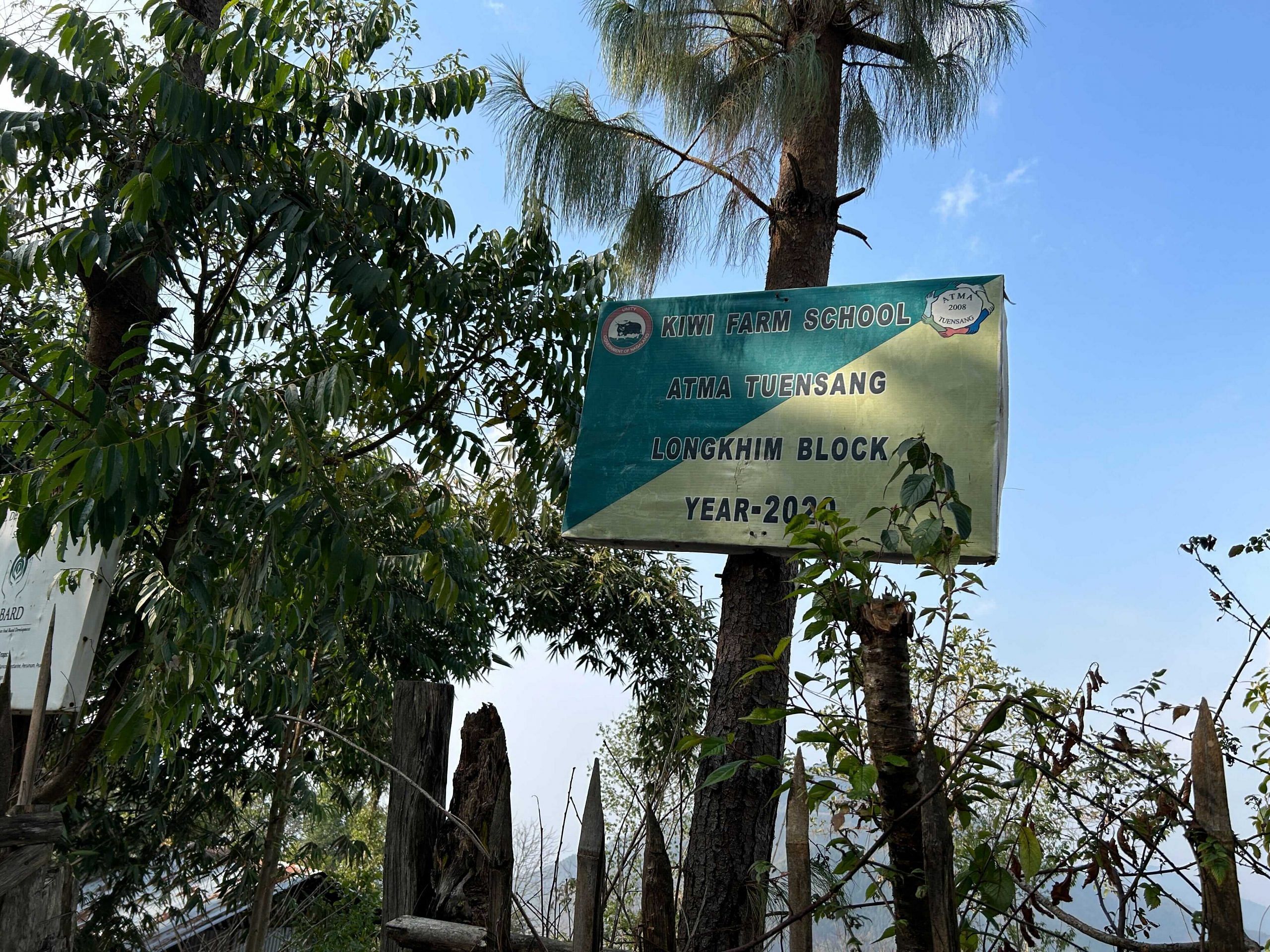
Today, Therise is one of the ‘progressive farmers’ whose income has increased manifold. He has left the printing and photocopying business behind and runs his one and half-acre farm from which he makes Rs 3-4 lakh a year growing kiwis and Rs 1 lakh from black cardamom, which is intercropped in the same orchard. Honey brings him Rs 40,000-50,000 annually.
“BLF opened the eyes of many who were clueless and confused. They have been exposed to many farming techniques and are productively engaged in farming,” the 38-year-old farmer says.
Therise practices permanent terrace farming by cultivating a his plot of land–a move away from jhum cultivation where a hill is cleared for farming every few years. It’s one of the agricultural practices BLF advocates for farmers.
Ushering such fundamental changes takes time. BLF also underwent the germination time to see the results of its efforts.
In 2012, BLF took 16 community leaders from seven villages to Dr Yashwant Singh Parmar Horticulture University in Solan, Himachal Pradesh, to learn what fruits and crops can be grown in certain agro-climatic zones.
“We came back and started mobilising funds. Then started a pilot project in 2013 with 234 families in seven villages,” Sangtam says, recalling that he even sold off a plot of land to arrange for funds to buy seeds before the state government intervened.
Then after seeing the progress, National Bank for Agriculture and Rural Development’s (NABARD) support poured in. “By the end of 2014, we started planning a NABARD-supported project under Tribal Development Fund to cover 700 beneficiaries in 12 villages. Under that project, we are growing a low-chilling variety of apples, kiwi, and a few other temperate stone fruits like peach, nectarine, plum and apricot,” he says.
Last year, a bumper harvest of one of the progressive farmers yielded such delicious kiwis that, Sangtam says, Assam Chief Minister Himanta Biswa Sarma placed an order after it reached him via a chain of officers who tasted it at a local festival.
“Before 2013, we only planted rice and maize and some potatoes. But now, we have switched to fruits. Last year, we got a good harvest of apples, kiwis and honey. I am able to smoothly run my family and send my kids to school,” says the farmer, Hotongba Sangtam.
While the progress brought by BLF “isn’t really quantifiable”, in a baseline survey of the project that was started seven years ago, BLF found that people’s average earnings from 3-4 acres of jhum cultivation had increased from about Rs 34,000 annually to about Rs 1.33 lakh.
“We have met a few progressive farmers whose income is Rs 7-8 lakh from 1 acre or an acre and a half,” Sethrichem Sangtam says.
Also read: Mizoram giving its own twist to the K-pop culture — An all-girls group is born
Grafting & pruning
The BLF founder acknowledged that although farming was turning into a profitable occupation, only a few young people were drawn to it. “Maybe one out of twenty are interested in getting into farming; the rest are more inclined to migrate to metros.”
However, this trend is slowly reversing. The number of youth turning to farming is gradually increasing after they see the income it can generate. A person who is an expert in grafting and pruning gets paid Rs 1,000 per day, compared to the usual wages for manual labour of Rs 250-300.
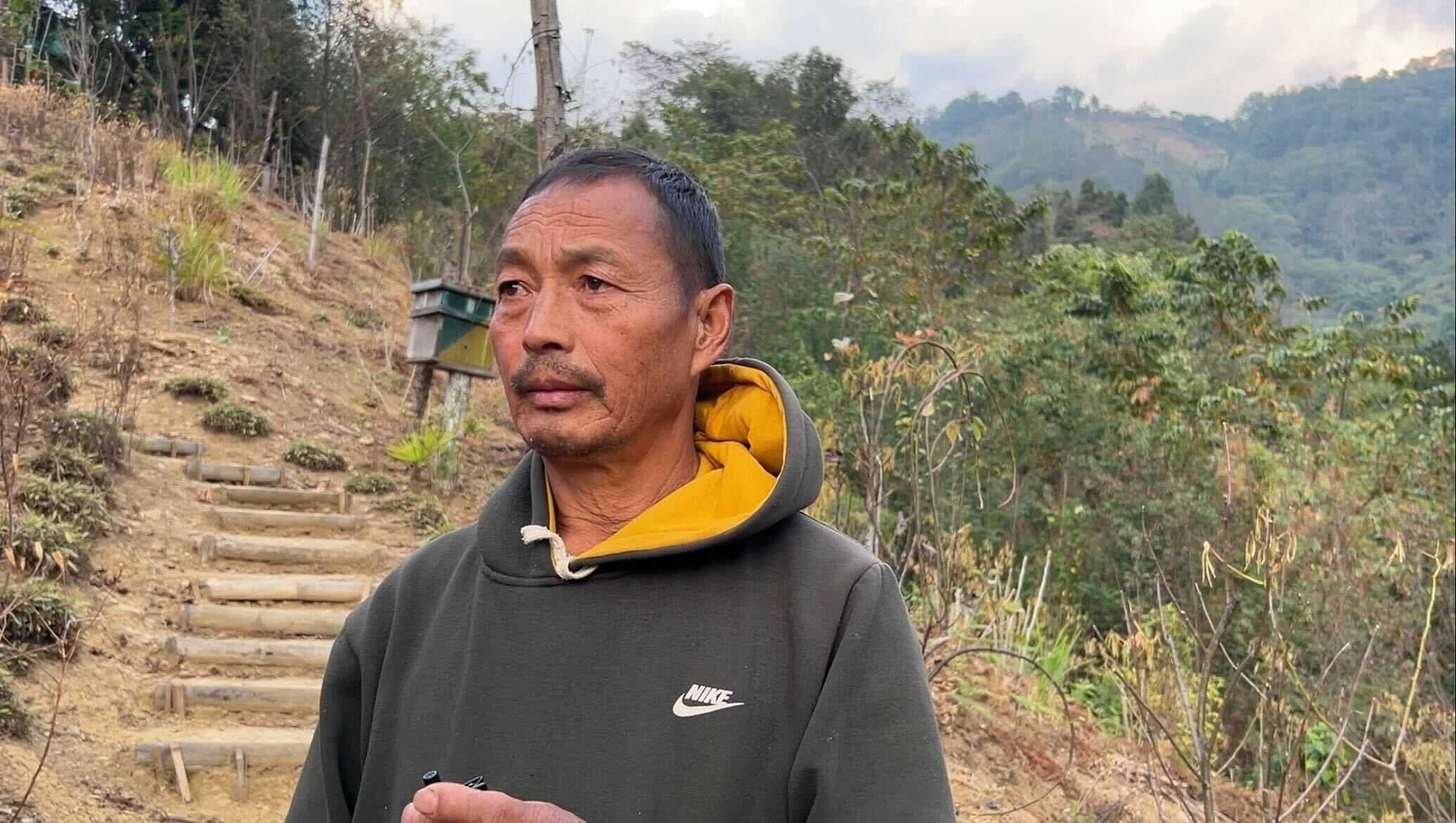
A hunter-turned-farmer Hojunse Sangtam makes around Rs 7-8 lakh per annum from growing fruits, selling honey and grafting plants. His expertise at grafting – a skill taught by BLF – has led him to become an instructor to others. For the next harvest season, he has grafted six different types of plum and nectarine into one plant, each expected to bear fruit at different times of the year.
An elusive market & eastern Nagaland
The most delicious of kiwis, apples, plums – all organically farmed without any fertilisers – that farmers produce in this region fails to reach the market because of bad road conditions.
“We don’t have cold storage and the roads are pathetic. By the time we take it to the market, it’s mostly spoiled,” says Sangtam, the frustration evident in his voice.
Power supply is irregular and internet connectivity is a challenge. “Many people could have learnt through the internet. Marketing is one area where the internet could help,” he adds.
Sangtam also points out that there are no processing units. However, never veering away from reality, he doesn’t wish for the region to have big factories in a particular location.
“This part of the country is also affected by various (insurgent) groups, different donations and taxes. If you have a bigger industry, it will attract unwanted people who don’t work.” What Sangtam wants is village-level production units. “We want our own FSSAI lab.”
He emphasised that eastern Nagaland is not reflected in the region’s healthcare, industry or even bureaucracy. “We haven’t produced a single IAS officer in history. There is one hospital in Kohima which has 75 specialist doctors whereas in eastern Nagaland, in six districts, we have about 25 doctors,” he says.
Also read: Cherrapunji ki Diwali? Netflix ad shows there’s never an effort to learn about Northeast
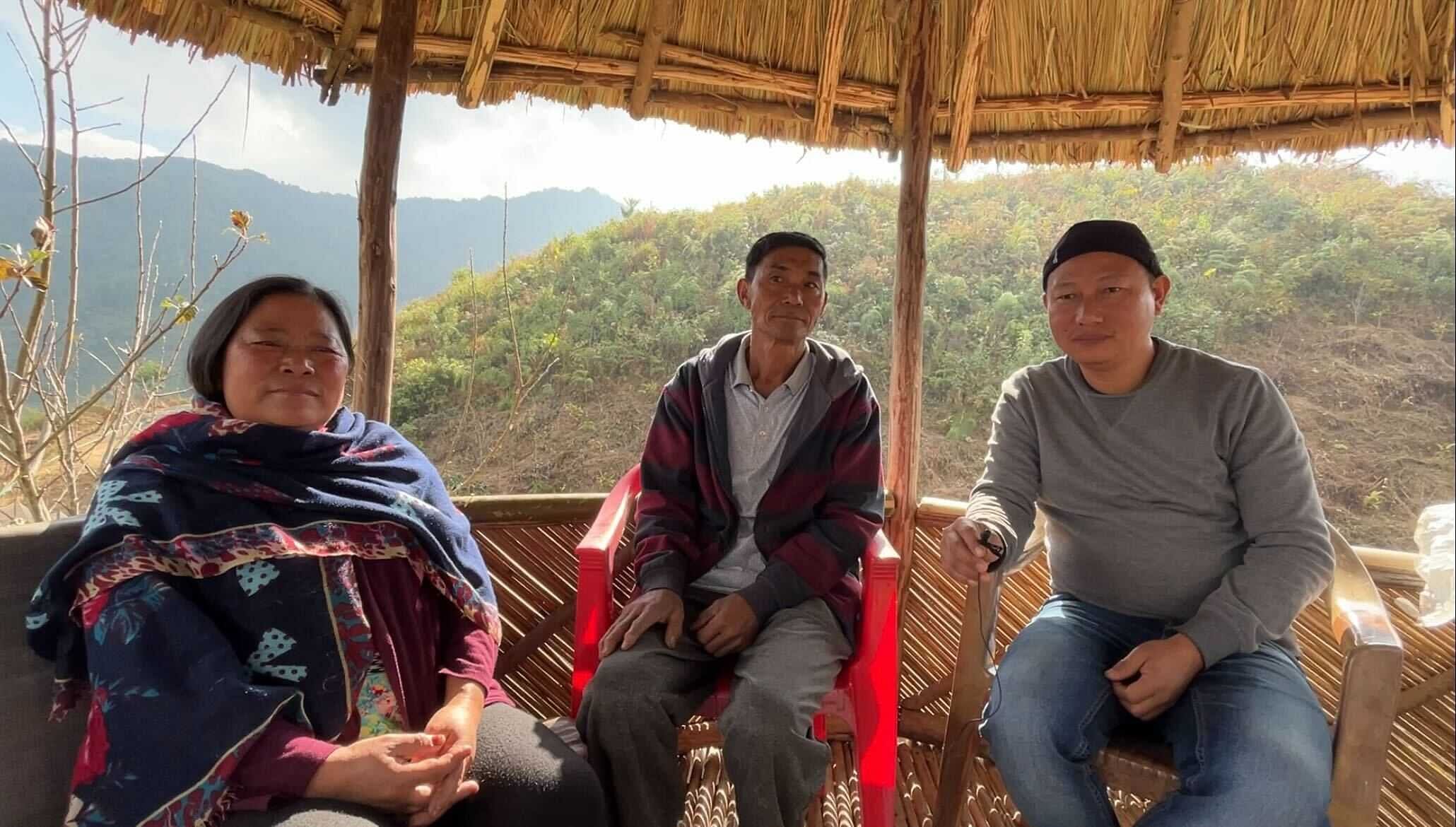
The road ahead
Sangtam’s zeal for giving back to the community hasn’t waned. While attending numerous calls during the day, he tries to decline invitations to places outside the state so that he can interact more with the farmers.
Sangtham is confident in the seeds BLF has sown among farmers regarding farming practices. Now, he feels it’s his responsibility to expose their produce to a wider world. He wants to use all the networks he has to “upskill the youth so that they can manage the value addition and the future marketing is taken care of.”
“We have trained most farmers on how to grow, now they are experts. We teach them five techniques. There are many farmers who added few more innovative ideas and best practices. Now they know how to grow. Our responsibility is to take it to the next level – marketing. How to help them get a good market,” he says.
The Better Life Foundation is now training its focus on biodiversity conservation.
“When we tell a farmer not to kill a bird or stop hunting, we also need to come up with an alternate solution for them,” says Sangtam. Instead, BLF is reacquainting youth with folklore. They’re teaching folk dance so that young people can take up the art form professionally. “That’s the cultural preservation and skilling part, which is linked with biodiversity conservation,” he says.
Sangtam is looking at the future with hope and is strategising along with the farming community.
In Tuensang, mangoes might not be the only unusual change global warming has brought. The village is also battling mosquitoes, a menace that’s confined to warmer regions. For global players, the way to fight climate change would be to force policy change, because the way forward is to adapt and to adapt fast.
(Edited by Ratan Priya)


